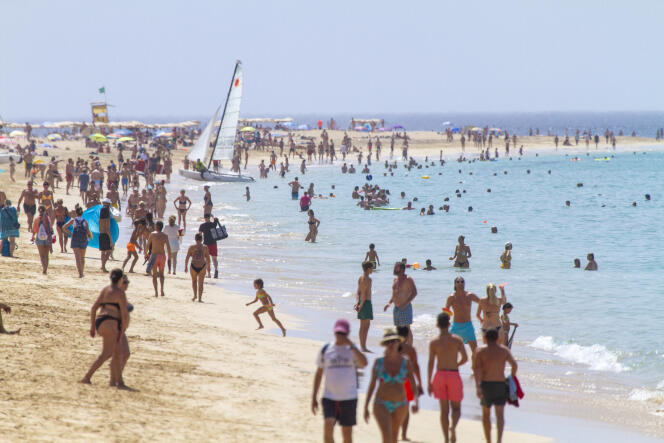

LETTER FROM MADRID

Crowded streets, stuffed restaurants, full parking lots: Summer is approaching and Spain is preparing to welcome millions of visitors. In 2023, 85 million international travelers visited the country, according to France's National Institute of Statistics. And the 91-million mark could be reached in 2024, according to consultancy firm BrainTrust. The anger that the influx is provoking – until now concentrated mainly in Barcelona – is now spreading to the rest of the country.
In the summer of 2023, it was fashionable in the Balearic Islands to put up fake signs near popular spots, with instructions in two languages. The same sign could read "Beach closed: Contaminated water," in English, and "Beach open," in Spanish. The source of the contamination was said to be the "guiris," a derogatory term for tourists. In Malaga in March, tourist apartment doors were covered with stickers reading: "Smelly tourists," "A family used to live here," "Get away from here" etc.
Hotel workers have become worried. "Certain models of tourism growth are reaching their limits," said José Luis Zoreda, president of EXCELTUR, the Spanish non-profit alliance for excellency in tourism, on April 16, recalling that in the Canary Islands, "the number of tourist accommodations has increased by more than 200,000, the equivalent of 500 new 400-bed hotels. No destination can sustain that."
The people of Tenerife are not putting up with it any longer. Six environmental activists began a hunger strike on April 11 to call for a halt to construction work on a hotel on Tenerife's wild La Tejita beach and a 420-unit luxury tourist complex in the small port of Adeje. And, under the slogan "The Canary Islands have a limit," launched by some 20 social and environmental organizations, several tens of thousands of people – between 50,000 and 100,000 according to sources – marched through the streets of the the Spanish archipelago's various islands on Saturday, April 20, in demonstrations described by the local media as "historic."
The case of the Canary Islands is emblematic of the dilemmas posed by economic development grounded in tourism. The sector accounts for 35% of the Canary Islands' GDP and 40% of jobs. In 2023, almost 16 million tourists visited the region, which is populated by "just" 2.2 million people. Developed on a massive scale from the 1960s onwards, tourism provided a development horizon for an extremely poor area, from which inhabitants were emigrating en masse to Latin America in search of a better future.
You have 53.86% of this article left to read. The rest is for subscribers only.
